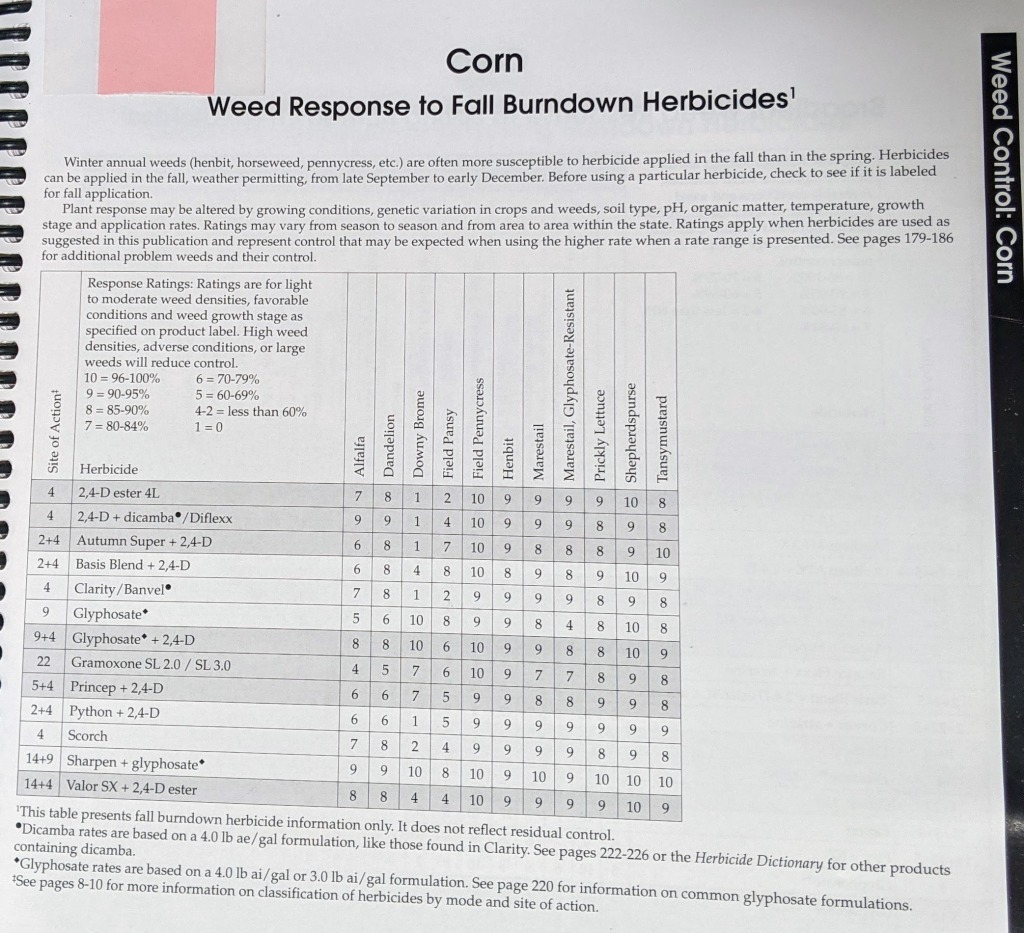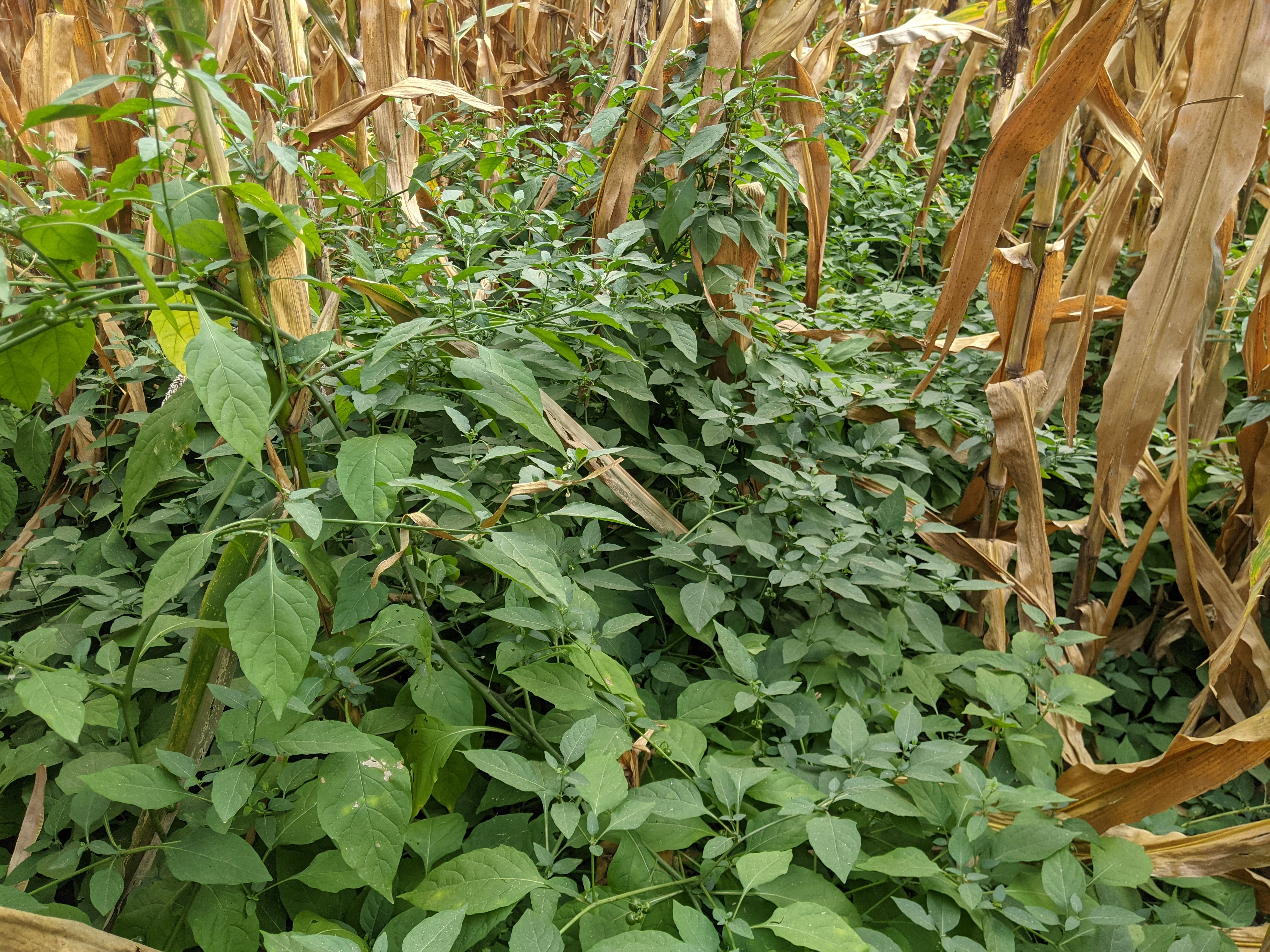| Upcoming Events: Oct. 19: Crop Science Investigation (CSI) for youth, 4:45-5:45 p.m., RSVP to jrees2@unl.edu Oct. 25: Heuermann Lecture: Mythbusting Cattle and Climate, 2:30 p.m., UNL East Campus Union & livestream, https://heuermannlectures.unl.edu/ Nov. 8: Young, Beginning, Small Farmer Symposium, 9 a.m.-4 p.m., UNL East Campus Union, https://ianr.unl.edu/young-beginner-and-small-farmer-symposium Nov. 12: Dr. Temple Grandin-Kids and Dreams Foundation: Understanding Animal Behavior, 10 a.m., Buffalo Co. Fairgrounds, Kearney Nov. 16: Cover Crop Grazing Field Day, 9 a.m. registration, ENREC near Mead Nov. 16: Crop Science Investigation (CSI) for youth, 4:45-5:45 p.m., RSVP to jrees2@unl.edu Nov. 19: Soil Health Summit Jan. 6: Crop Production Clinic, Mid-Plains Community College, North Platte Jan. 6-7: York Ag Expo, Holthus Convention Center, York Jan. 11: Crop Production Clinic, Northeast Community College, Norfolk Jan. 13: Crop Production Clinic, Holiday Inn Express, Beatrice Jan. 19: Crop Production Clinic, C3 Hotel & Convention Center, Hastings Jan. 21: Crop Production Clinic, ENREC near Ithaca Jan. 25-26: No-till on the Plains Winter Conference, Wichita, KS, http://www.notill.org/upcoming-events Jan. 25: Crop Production Clinic, Younes, Kearney Jan. 26: Crop Production Clinic, Holthus Convention Center, York Feb. 17: Nebraska On-Farm Research Updates, York |
Crop Update: The armyworm calls have greatly subsided other than “is it ok to plant wheat and/or rye now?” I was encouraging planting them last week. So, yes, would encourage planting now, and also am encouraging to scout (even though I appreciate that’s hard with harvest!). Hopefully they’re moving south, although it’s unfortunate from the tweets I’m seeing in Kansas now of damage there. I did get a call from the Spalding area where a newly seeded rye field was taken out and established alfalfa stand mowed to the ground, so there may still be some around.
For those cutting milo, heard a report of the cutter bar being full of what Dr. Bob Wright identified as a plant bug (Lygus sp.). They have piercing/sucking mouthparts and feed on flower buds and seeds on a range of plants. If you’re also noticing them, they should die in the grain bin and not be a problem. We just really need a freeze! A freeze would also help with those tiny, black biting insects called minute pirate bugs and with the flies!
Starting to receive questions on fall burndown herbicides and lots of questions regarding nitrogen with input prices. Will share more on this in upcoming weeks, but for now, I have a picture of the fall burndown herbicide table from the UNL Guide for Weed Management (page 93 & 139) on my blog site if that helps. Planting rye also reduces winter annual weeds and marestail.


SCN Sampling: As agronomists are taking soil samples for fertility, please ask them to split the sample and send in for soybean cyst nematode (SCN) as well. You can also target these samples (0-8”) from areas of the field that yielded less and from field boarders/entryways. I often just use plastic quart-sized ziplock bags and label them as “SCN”. We appreciate the support of the Nebraska Soybean Board and your soybean checkoff dollars used for free SCN testing, so be sure to test this year. The address to submit samples and more information on sampling for SCN can be found here: https://go.unl.edu/aui2.



Nightshade in cornfields: Taking corn notes this fall, have again seen lots of black nightshade in fields (also some horsenettle). Seems to me like it’s been on the increase the past few years in corn fields. In asking via Twitter if others also observe it more, it appears that people do from messages sent directly to me. I’ve been seeing it in both row directions in ridge-till fields and a few no-till ones. Grateful for Orvin Bontrager sharing his experience and observations! He shared, “Ridge till fields that had been hilled with east-west rows. Especially if get rain or watering before canopied. Have seen this for years. Not as much on rotated soybean fields more on long term continuous corn. Undisturbed residuals containing mesotrione seems to control.” Mesotrione is in products like Lexar, Lumax, Callisto, Acuron, Resicore, etc. So, for those asking how to control this, in no-till perhaps consider using a product containing mesotrione and for ridge-till, perhaps if you have a way to follow hilling with some mesotrione can help?
The bigger reason for my concern is if the corn residue will be grazed. Nightshade and horsenettle contain toxins in all plant parts with the concentration increasing in all the parts, except in the berries, as they mature. A frost won’t reduce the toxicity. I would hope the amount of corn residue would off-set any impacts from the nightshade/horsenettle plants.
Dr. Jerry Volesky, Extension forage specialist, shared the following, “It is very difficult to determine exactly how much black nightshade is risky. Guidelines say that a cow would need to consume 3 to 4 pounds of fresh black nightshade to be at risk of being poisoned. These guidelines, though, are considered conservative since there is little data on the actual toxicity of nightshade plants. Also encouraging is that reports of nightshade poisoning have been very scarce in the past. Fortunately, even though nightshade plants remain green fairly late into the fall, cattle usually don’t appear to seek out nightshade plants to graze. However, green plants of nightshade might become tempting toward the end of a field’s grazing period, when there is less grain, husks, or leaves to select. So common sense and good observation must be your guide. Scouting fields to estimate the general density of nightshade plants will help you determine any potential risk. Secondly, and particularly near the end of a field’s grazing period, closely observe what the cattle are eating to see if animals might be selecting nightshade plants.”


































